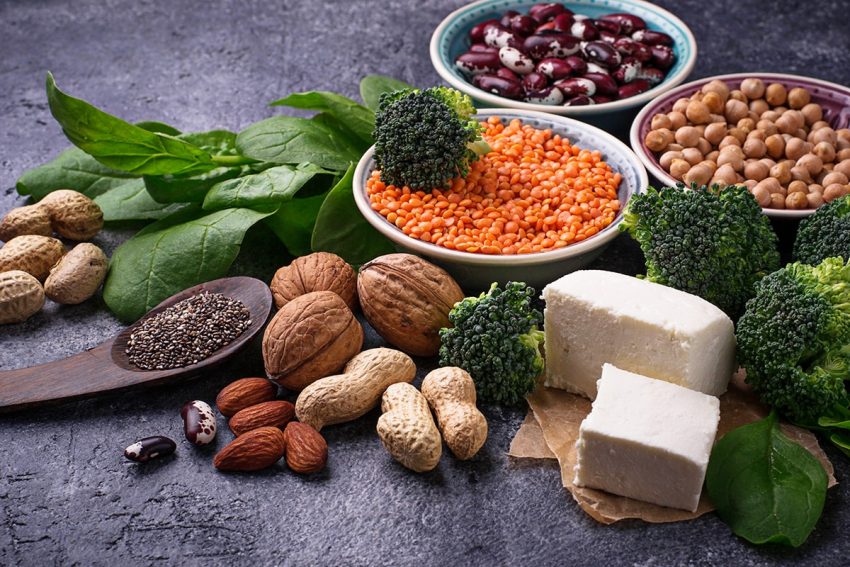Protein-containing foods are an important component of a healthy diet. Many people who do not eat consciously tend to eat too little protein.
Protein deficiency is not to be trifled with and it is practically impossible for someone to actually consume too much protein through their diet.
Those who then start to deal more with it often find it difficult to find foods with a lot of protein and thus meet their needs. This is especially true for people with special dietary needs. After all, you don’t want to be dependent on supplements and have to drink protein shakes every day in order to meet your protein requirements.
For this reason, I have collected foods that contain protein in various categories and have compiled a list of the best foods with a lot of protein for you. It was also important to me that it is food that you can get in most well-stocked supermarkets or at the weekly market.
The article is divided into the following sections
One click takes you directly to the section that interests you most. However, I recommend that you also read the introductory chapter.
After reading, you should have enough choice to be able to meet your protein requirements in the future according to your needs and in the most varied of variants.
At the end of the article you will also find the option to download the list as a PDF or as an Excel file with a comprehensive filter function.
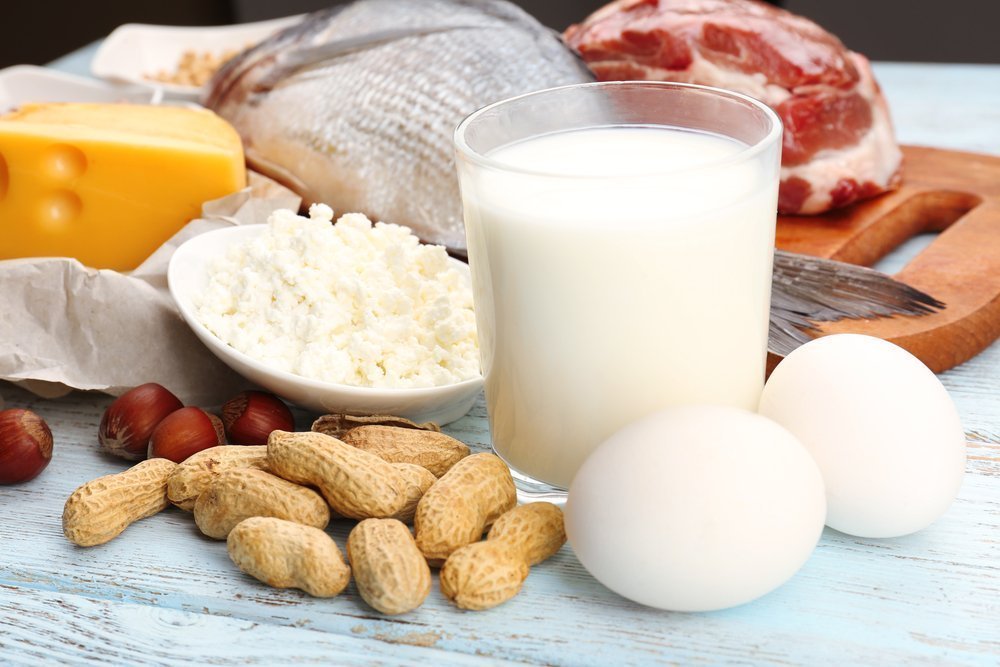
How much protein do you actually need?
One question that many ask is what is the right amount of protein. Maybe you already know your protein needs. If not, I want to give you a few clues here to find the right amount for you:
In fact, the protein requirement is quite individually dependent on yourself, your goals and your living conditions. However, there are a few clues that you can use to reliably determine your personal needs.
Basically, an amount of 0.8 grams of protein per kilogram of body weight is the basis on which you should assume that all processes in your body can run without problems and that you have no problems with in the medium to long term Want to get a protein deficiency . However, this only applies if you are healthy and do not do any sport. However, since I recommend everyone to exercise regularly, also just to stay healthy, this amount does not play a major role in my world.
I therefore recommend a minimum of 1.5 grams of protein per kilogram of body weight. This is a good guide for active people. This can also help build and maintain some muscle mass. If you want to build muscle mass effectively as possible, there is nothing against rounding up to 2 grams.
If you lose weight and value as much muscle maintenance as possible, you should even consume 2.5 grams of protein per kilogram of body weight.
Note that these are all guidelines and you always have to look at how your body reacts to larger amounts of protein. With the recommended amounts you don’t have to worry about consuming too much protein .
About the quality of protein-containing foods
When you think of protein-rich foods, meat and dairy products probably come first. However, there are a variety of other foods high in protein. In particular, those who want to eat vegetarian or vegan must (also) resort to alternative sources of protein.
It should be noted, however, that not all foods contain protein of the same quality. Proteins are always composed of amino acids. The composition varies from food to food. The essential amino acids play a decisive role in this. The body cannot produce these itself from other amino acids.
In the case of foods with a composition close to that of human needs, one speaks of complete proteins. The term biological value is often used in this context. Most animal protein sources have a very high biological value.
In the case of vegan foods, however, the biological value is often relatively low. This is because various essential amino acids are missing or only present in very small amounts in these foods. This is especially true for nuts, legumes, grains and vegetables with a high protein content. That’s why these are far from being unhealthy foods . A sensible combination of such protein sources at a meal makes perfect sense for this reason.
Personally, I think it makes sense to always use different sources of protein in order to have a little variety in the diet.
Furthermore, other nutrients in the food must also be considered. For example, some protein-rich foods are also high in fat. That is not necessarily a bad thing per se. But if you lose weight and define your muscles, it can be difficult to get your protein needs without exceeding your calorie goal.
Non-vegetarian, animal protein sources
Now we come to the protein foods. I would like to start with the obvious, animal protein sources. The non-vegetarian foods in this group can in turn be subdivided into protein-containing meats, fish and seafood.
If these are not of interest to you, just scroll on until you get to the food groups that are of interest to you.
My top 10 protein-rich meats
Meat is the classic when it comes to meeting your protein needs. “You should just eat as many muscles as possible to get big muscles” a well-known bodybuilder once said to me. Somehow there is something to it. There are hardly any sources of protein that are more beneficial for muscle building than meat. In addition to the very high protein content, this also includes the high creatine .

Meat – the classic among protein suppliers
Below are my top 10 types of meat with the highest protein content (average value per 100 grams):
- Dried meat ( Beef Jerky *) – approx. 50-70 grams
- Serano ham – 30 grams
- Lamb chop – 25 grams
- Turkey breast – 24 grams
- Chicken breast – 23 grams
- Rabbit fillet – 22 grams
- Pork schnitzel (natural) – 22 grams
- Beef fillet – 21 grams
- Kasseler – 20 grams
- Minced meat, mixed – 19 grams
My top 10 protein-rich fish species
Compared to e.g. the southern Europeans we Germans eat relatively little fish. Fish can also be a very good source of protein. When it comes to protein-rich foods, the fish must of course not be missing.
By the way, I like to eat fish, and as often as possible. This is also because it tastes very good to me when it is well prepared. Such a grilled tuna steak is just great! In addition, it is also because fish not only contains a lot of protein, but the fat content also largely consists of valuable omega 3 fatty acids. If I eat a lot of fish, I have to eat less Omega 3 fish oil capsules .
Below are my top 10 fish species with the highest protein content (average value per 100 grams):
- Tuna fillets (in their own juice) – 29 grams
- (Real) caviar – 26 grams
- Tuna steak – 25 grams
- Salmon fillet – 22 grams
- Char fillet – 20 grams
- Halibut – 20 grams
- Dorade – 20 grams
- Trout – 20 grams
- Redfish – 18 grams
- Plaice – 17 grams
My top 10 seafood with lots of protein
The sea is so big that a whole host of other animals live in it that cannot be assigned to the fish. Incidentally, I never understood why these are called “fruits”. While I am very fond of most types of fruit, there is also not that much seafood that I particularly enjoy eating. If you are looking for protein-rich foods, then seafood is definitely worth a look as an alternative to meat and fish.
In addition to a high protein content, seafood also has the advantage that it has a very low energy density. So you can consume a relatively large amount of protein and at the same time relatively few calories. So if you like them and tolerate them, they are a very good source of protein.
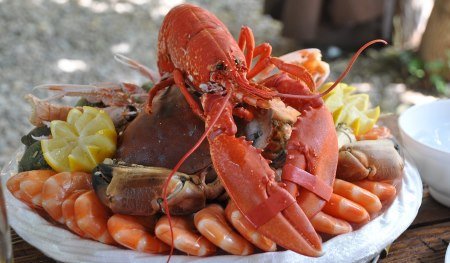
Some love and some hate them – Seafood
Below are my top 10 seafood with the highest protein content (average value per 100 grams):
- North Sea crabs – 21 grams
- (giant) prawns – 20 grams
- Lobster – 20 grams
- Lobster – 19 grams
- Crab meat – 19 grams
- Scallops – 16 grams
- Sepia – 16 grams
- Scampi – 15 grams
- (Giant) squid – 15 grams
- Mussels – 13 grams
Good sources of vegetarian protein
The vegetarian diet is now very widespread. In representative surveys, around 8% of Germans now admit that they eat a vegetarian diet. So it is no longer unusual if someone does not want to eat meat.
Even if you are not supposed to be a strict vegetarian, you may try to avoid meat as part of a conscious diet. Or maybe you want to eat less meat for ethical reasons. If you only covered your protein requirements with meat, you would admittedly have to eat quite a lot of it.
For various reasons it makes sense to deal with vegetarian protein sources.
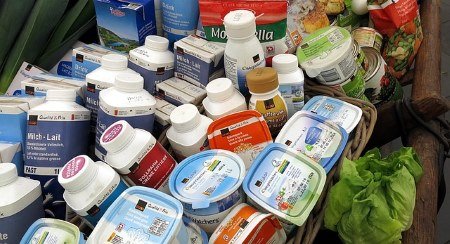
Vegetarians can also cover theirs with enough dairy products Protein requirement
I have divided the vegetarian protein sources into cheese, other dairy products and eggs.
My top 10 types of cheese with a lot of protein
I really like to eat cheese. You could even say I love cheese. I think you can make almost any hearty dish even better if you bake it with cheese. For this reason, I of course think it’s great that cheese is not only delicious but also a good source of protein.
But be careful: some varieties are very high in fat. You should keep this in mind if you want to lose weight or if you value a limited calorie intake for other reasons.
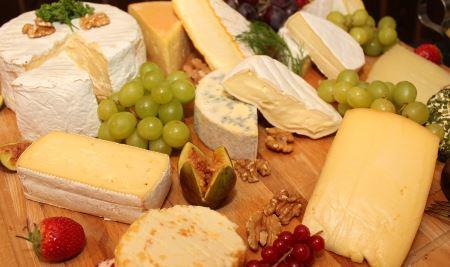
The cheese platter please … because of the lots of proteins!
Below are my top 10 types of cheese with the highest protein content (average value per 100 grams):
- Parmesan – 36 grams
- Gouda light – 31 grams
- Harz roller – 30 grams
- Emmentaler – 29 grams
- Gouda old – 29 grams
- Mountain cheese – 28 grams
- Tilsiter – 26 grams
- Sliced goat cheese – 25 grams
- Manchego – 25 grams
- Maasdammer – 25 grams
As you can see, the selection of delicious cheese with a lot of protein is quite large. I’m sure there is something for your taste too.
Other dairy products (except cheese)
In addition to cheese, there are other protein foods that are made from milk. Similar to seafood, the protein content may seem low at first glance compared to some types of cheese. However, I advise you to always take a look at the other nutritional values here as well. Only then should you decide for or against a food to meet your protein requirements.
Below are my top 5 dairy products (except cheese) with the highest protein content (average per 100 grams):
- Lean quark – 12 g
- Skyr – 11 grams
- Greek plain yogurt – 9 grams
- Kefir – 4 grams
- Milk – 3 grams
Eggs
Eggs are an all-time classic when it comes to protein foods. They are a great source of protein because the composition of the amino acids in protein is very close to that of the human body. And just in case you didn’t know: Consuming eggs has no negative impact on your cholesterol level.

Much better than their reputation – chicken eggs
Making a list of different types of eggs for this article would be a bit silly. Differences between free-range, floor and Demeter husbandry as well as white and brown and white chicken eggs are marginal. Other eggs (except quail eggs maybe) are not available in most normal supermarkets.
- Chicken egg (whole egg) – 13 grams
- Quail egg – 13 grams
- Chicken egg (egg white) – 11 grams
At most, the distinction between whole egg and egg white plays a role. However, it does this mainly because the fat content in the egg yolk is significantly higher.
Vegan, protein-rich foods
After there was a real vegan hype a few years ago, the growth has now subsided somewhat. But at least about 1% of Germans in surveys say they eat vegan. Even if that doesn’t sound like much at first, there are more people than Frankfurt am Main has residents.
Either way, there are good reasons to look around in this category as an omnivore or vegetarian. A little diversity doesn’t hurt, and ultimately it always depends on the overall balance. In my opinion, it can make sense anyway to be aware of your consumption of animal products and, if necessary, to reduce it a little.
I have divided the following vegan foods with a lot of protein into the subgroups beans, seeds and nuts, grains, mushrooms and vegetables.
Beans
Beans are the first thing most people will think of when it comes to meeting their protein needs with plant-based foods. The soybean is particularly well known in this context because of its various processing methods (especially tofu).
Here are my top 10 types of beans and foods made from beans with the highest protein content (average value per 100 grams):
- Lentils – 26 grams
- Tempeh – 19 grams
- Smoked tofu – 18 grams
- Natural tofu – 14 grams
- Edamame – 14 grams
- Soybeans – 12 grams
- Kidney beans – 8 grams
- Chickpeas – 7 grams
- White beans – 7 grams
- Peas – 6 grams
By the way, beans are more versatile than you might think. You can even use it to make a delicious low carb chocolate cake !
Seeds and nuts
Seeds and nuts are a great snack in between. You do something good for yourself because many nuts are rich in proteins and essential fatty acids. However, when it comes to calories, they have a significant impact on account of their relatively high fat content.

He has known for a long time that nuts real, natural energy boosters and are rich in protein and valuable nutrients!
Below are my top 10 seeds and nuts rich in protein (average values per 100 grams):
- Pumpkin seeds – 35 grams
- Hemp seeds * – 35 grams
- Pine nuts – 32 grams
- Peanuts – 29 grams
- Sunflower seeds – 26 grams
- Flaxseed – 24 grams
- Almonds – 24 grams
- Chia seeds * – 22 grams
- Walnuts – 16 grams
- Brazil nuts – 14 grams
Grain
Grains are usually assigned to carbohydrates. It makes perfect sense because these are the predominant nutrient group in cereals. However, there are also types of grain and foods made from grain that can be considered protein-containing foods with a lot of protein. However, you should always keep an eye on the carbohydrate content and the amount of calories.
Below are my top 10 types of grain and foods made from them with the highest protein content (average value per 100 grams):
- Seitan – 28 grams (be careful with gluten intolerance)
- Quinoa * – 15 grams
- Amaranth – 15 grams
- Spelled flakes – 14 grams
- Oatmeal – 14 grams
- Durum wheat semolina – 13 grams
- Millet 11 grams
- Soft wheat semolina – 11 grams
- Wheat flour – 10 grams
- Buckwheat – 10 grams
Mushrooms
Mushrooms are best known for having a very low energy density. So there are relatively few calories for a lot of mass. In absolute terms, therefore, there are no total protein bombs among the mushrooms. The exception is Fusarium venenatum, which is marketed as a meat substitute under the Quorn brand. However, there are people who are (strongly) allergic to it.
In addition, mushrooms are usually rich in fiber and minerals. This makes them a good addition to your diet, especially because they can be very tasty when prepared correctly.
Below are my top 5 types of mushrooms with the highest protein content (average per 100 grams):
- Quorn (mycoprotein) – 16 grams (allergic reactions possible)
- Porcini mushrooms – 4 grams
- Oyster mushrooms – 4 grams
- Mushrooms – 3 grams
- Chanterelles – 2 grams
Vegetables
Vegetables are similar to mushrooms in terms of energy density. Due to the very high water content, this is in many cases even lower. In an absolute comparison, it seems a bit funny to describe vegetables as protein-containing foods or even foods with a lot of protein.
With a large amount of fiber and valuable vitamins and minerals, vegetables are an essential part of your diet anyway. You can’t actually eat enough vegetables. In relative terms, however, the protein content can be quite relevant. For example, one kilo of broccoli adds 40 grams of protein to your daily balance.
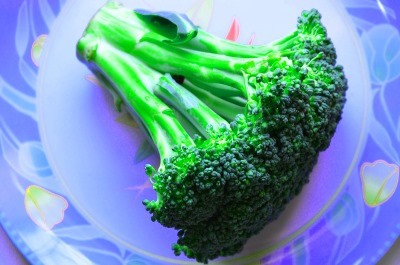
My personal favorite vegetable and Also at the forefront when it comes to protein content – broccoli
Here are my top 5 vegetables with the highest protein content (average per 100 grams):
- Garden cress – 4 grams
- Broccoli – 4 grams
- Spinach – 3 grams
- Cauliflower – 3 grams
- Zucchini – 2 grams
Final words on protein foods
Proteins are an important building material for all kinds of cells in the human body and essential for vital metabolic processes. It is therefore important that you always consume enough protein.
Luckily, there are quite a few protein foods to choose from. So you don’t have to drink protein shakes every day or constantly eat meat and eggs to meet your protein requirements. Food with a lot of protein can also be varied.

